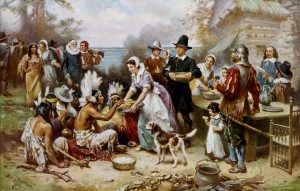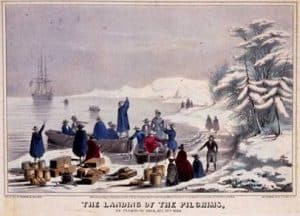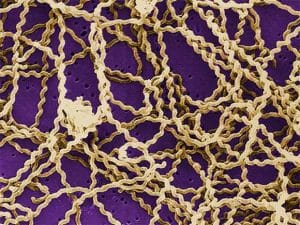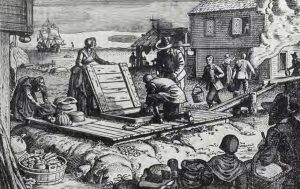How Water Shaped the First Thanksgiving

While we are celebrating Thanksgiving this week by spending time with family and indulging in an abundance of succulent foods, water is probably the furthest thing from our minds. But water played a key role in the first Thanksgiving, and was instrumental in shaping the history that has brought us to modern-day America.
The History of Pilgrims
While history books found in elementary schools across the nation commonly teach that the Pilgrims fled England in 1620 in search of religious freedom and a new life, they seldom mention that the Pilgrims were also fleeing the highly contaminated water supply of 1600’s England. Lacking any type of improved sanitation or water treatment, the water supply had become so fouled that the life expectancy of city-dwellers was down to a miserable 26 years.

Although they had no understanding of pathogens and bacteria, the English knew that drinking plain water made them sick. Therefore, the English, including the Pilgrims, avoided drinking water, instead choosing beer and occasionally wine as their drink of choice — even for the children. During the extremely difficult, perilous 65-day journey of the Virginia-bound Mayflower, the ship ran low on beer, and the crew, not wanting to share their remaining beer supply with the Pilgrims, made the decision to land early in Massachusetts instead. The ship docked near Provincetown and, after sending out a scouting party, sailed to Plymouth where it docked for the winter. This was December of 1620.
Over the winter, over half the population of Plymouth perished from poor nutrition, inadequate living quarters, and harsh conditions. The remaining 50 English settlers would have been an easy target for the robust Indian population that had lived in the area only a few short years prior. But where were they now?
Bringing Disease to the New Land

In fact, many of the local Native American tribes had been decimated by leptospirosis just a few years earlier. The epidemic, which took place between 1617-1619, was brought to the New World on explorers’ ships in the form of the black rat. Leptospirosis is a zoonotic disease whose bacterium lives in animal hosts and is transmitted from animals to humans via urine in fresh water. Non-native to North America at the time, the black rat is the only animal whose kidneys can withstand a continuous infection of leptospirosis. These rats quickly infected native species, which in turn contaminated the water supply. And because Native Americans interacted with water so much more than did Europeans – drinking, bathing (Europeans of the time did not bathe much), cranberry harvesting, fishing, and wearing animal pelts, for example — they were much more susceptible to leptospirosis fatality. Squanto, a Native American who became a friend to the Pilgrims and who negotiated a peace treaty between the Pilgrims and the Wampanoag, was the only surviving member of the Patuxet tribe. The rest had perished from leptospirosis.
Once the colonists began to form a new life during the spring of 1621, they learned about alternate food sources, most of which involved the abundant, clean water in the area. Massachusetts Bay was teaming with fish, though the Pilgrims did not have fishing gear; instead, they learned to harvest clams, mussels, and lobster from the sea. The lush area also provided habitat to waterfowl such as ducks and geese, as well as wild turkeys and other birds. The Pilgrims even learned how to catch eel in riverbeds. The first Thanksgiving was celebrated in the fall of 1621, with the 50 surviving Pilgrims and about 90 Wampanoag guests.
Looking Forward

The Pilgrims had survived nearly one year in the New Land, and their future was filled with hope. These hardy people continued to build and multiply over the next few decades, and just 31 short years after the first Thanksgiving, Boston became home to what would become known as the first waterworks in the United States. In 1652, the Water-Works Company of Boston constructed a gravity conduit system that used hollowed out logs to convey water from water sources such as wells and springs to a 12’x12’ reservoir. And the rest is history.
So this Thanksgiving, raise a toast — of water — to the Native Americans and colonists who survived that harsh winter almost 400 years ago. Without them, we wouldn’t be celebrating Thanksgiving today.
Happy Thanksgiving to you and yours!
